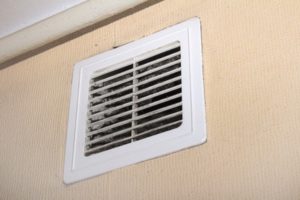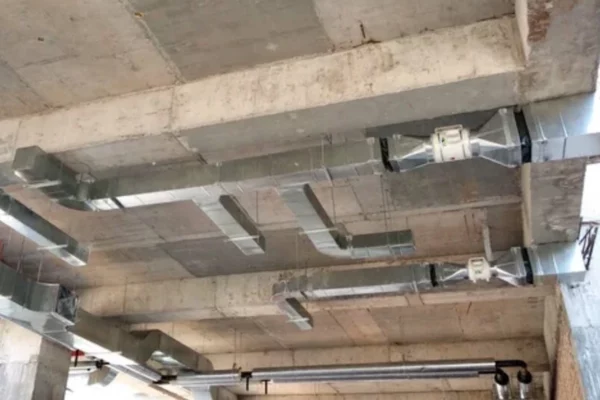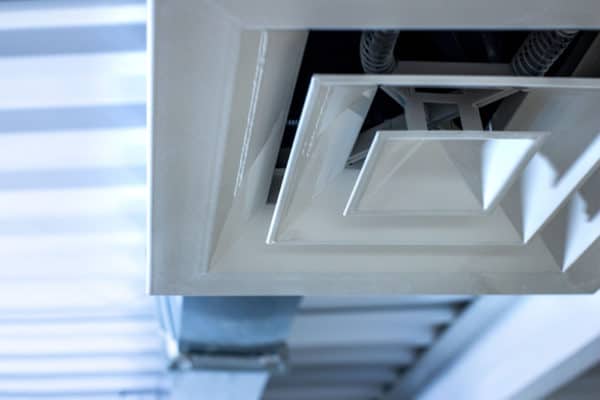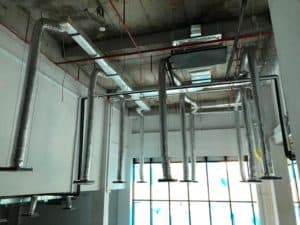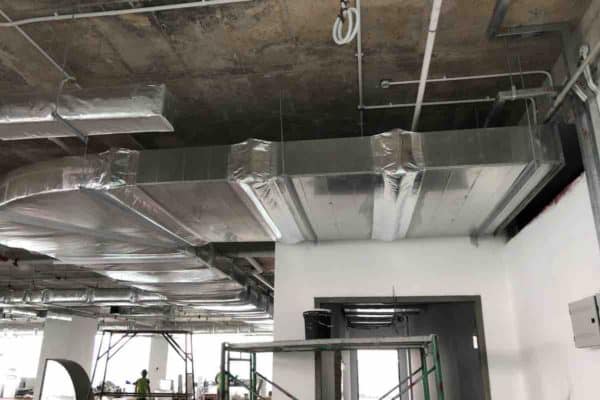What Type of Duct to Use for a Bathroom Ventilation Fan?
A ventilation fan is necessary when your bathroom has no window. However, many people are wondering what type of duct they should be used to vent the bathroom. So, I decided to post a guide.
Generally, there are 3 types of ducts you can use to vent a bathroom fan; a) rigid metal duct, b) round flexible duct and c) round PVC duct. However, the most common way to vent a bathroom fan is using rigid ducts as the main duct and a short length of flexible duct to connect the bathroom fan to the main duct.
With that, there are a few ways to vent a bathroom fan as well. Hence, understanding the ductwork design for bathroom ventilation fans can help you make a better decision.
Bathroom Ventilation Fan Ductwork Design
Throughout my years of working experience in residential air conditioning and mechanical ventilation projects, I’ve seen all kinds of bathroom ventilation fan ductwork designs.
Every design has its own pros and cons as well as specific requirements and applications. So, let’s take a look at different bathroom ventilation fan ductwork designs.
1. Rigid Duct and Flexible Duct Combo
By far the most common ductwork setup for residential bathrooms and even commercial bathrooms is the combination of rigid duct and flexible duct.
This ductwork design is suitable for bathrooms that are located far away (eg: 15-25 meters) from the exterior wall of the house or building.
It uses a long length of the rigid duct as the primary duct for exhaust air and one or more short lengths of flexible duct (below 1.5 meters) for the connection between the bathroom fan and the rigid duct as well as the connection between the rigid duct and the external grille or vent/louver.

The above is a bathroom fan duct connection photo that I took from one of my previous projects. As you can see, a short piece of flexible duct is connecting the green color rigid duct and the bathroom fan.
Suppose the other end of the bathroom fan should be also connected to a flexible duct but we don’t have enough space so we connect it directly to the rigid duct.

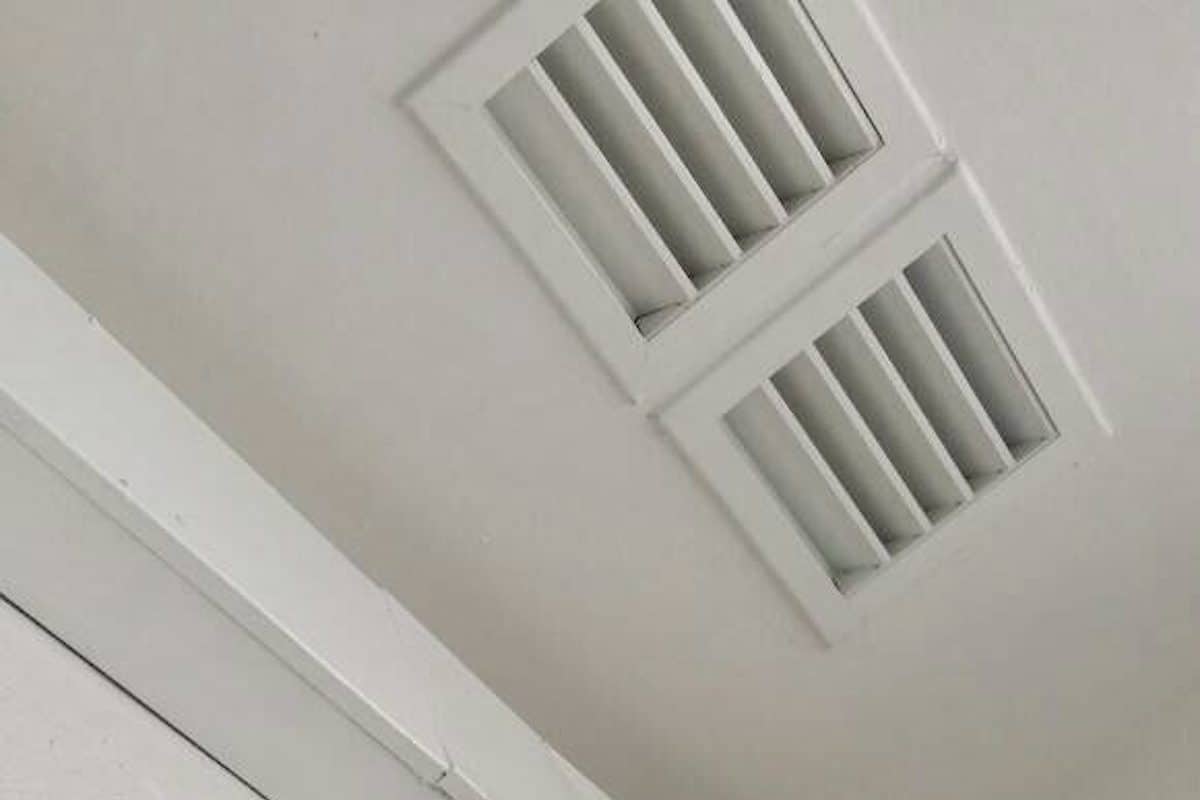
This photo is another example of the bathroom fan duct connection which involved a flexible duct on both ends of the bathroom fan.
The reason why we use flexible ducts is that flexible ducts absorb vibration. If we connect a bathroom fan directly to a rigid duct, it may produce a rattling noise during operation.
Meanwhile, inside the bathroom, the exhaust vent is also connected to a flexible duct and the flexible duct is then connected to the rigid duct.
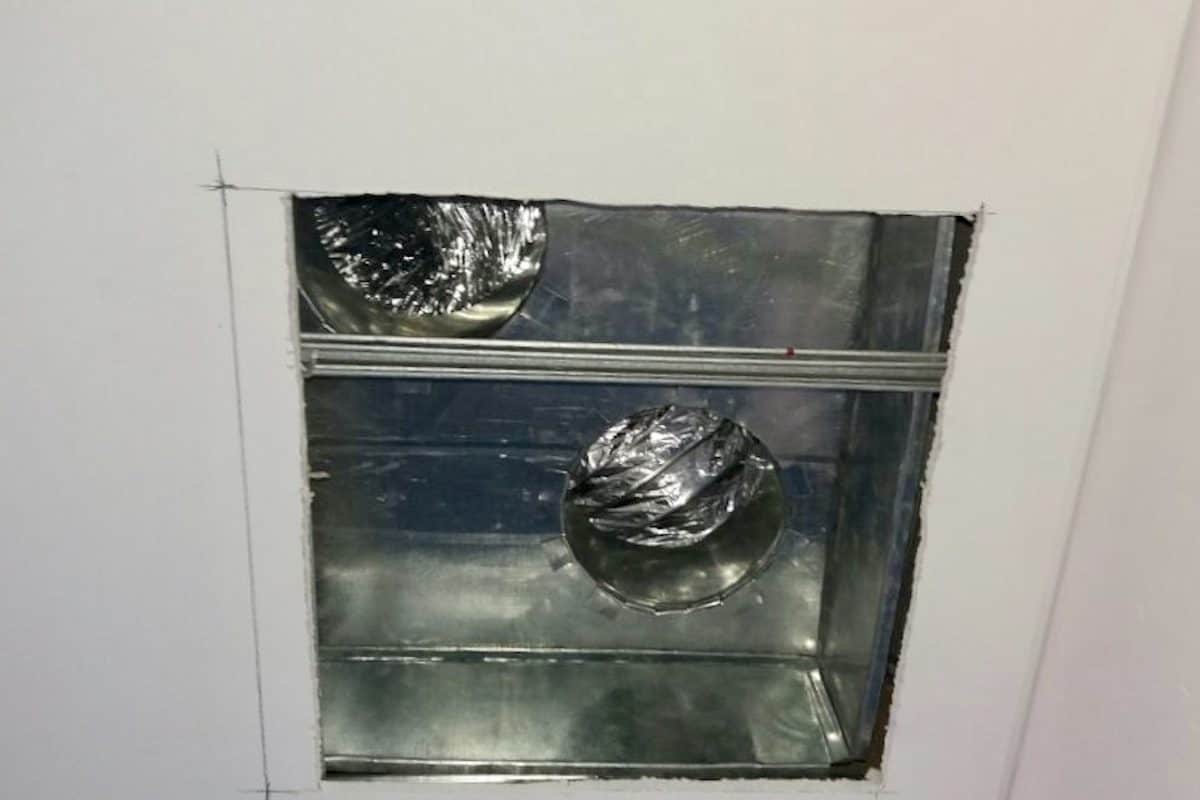
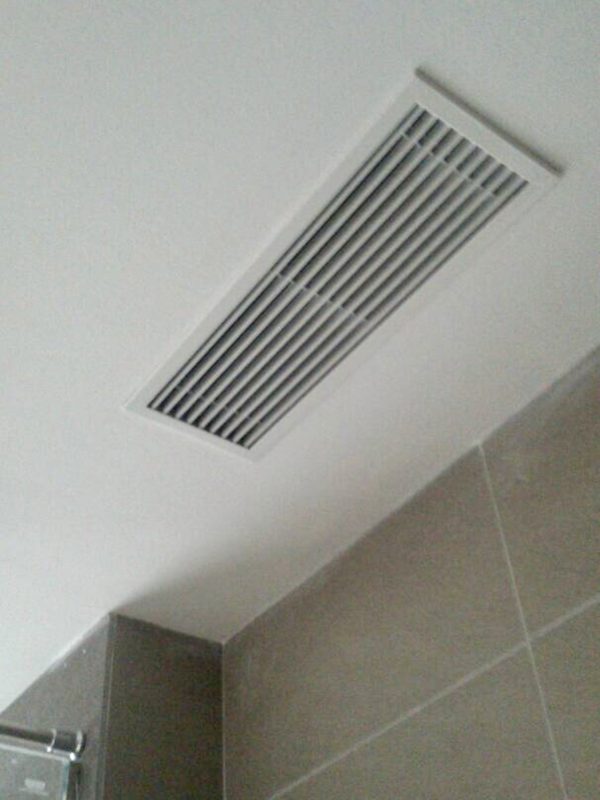
The type of grille for the bathroom is up to your preference but we always use a plenum box as an adapter to allow for a flexible duct connection.
Notice that the above plenum box has two flexible duct connections. It is because we need more exhaust airflow and we use two smaller ones instead of a bigger one for standardization purposes.
Even for public bathrooms where there are significantly more exhaust vents, we also use the same setup for the ventilation system.

All flexible ducts are connected to the rigid main duct via duct collars. A duct collar is an adapter for the connection between a flexible duct and a rigid duct.
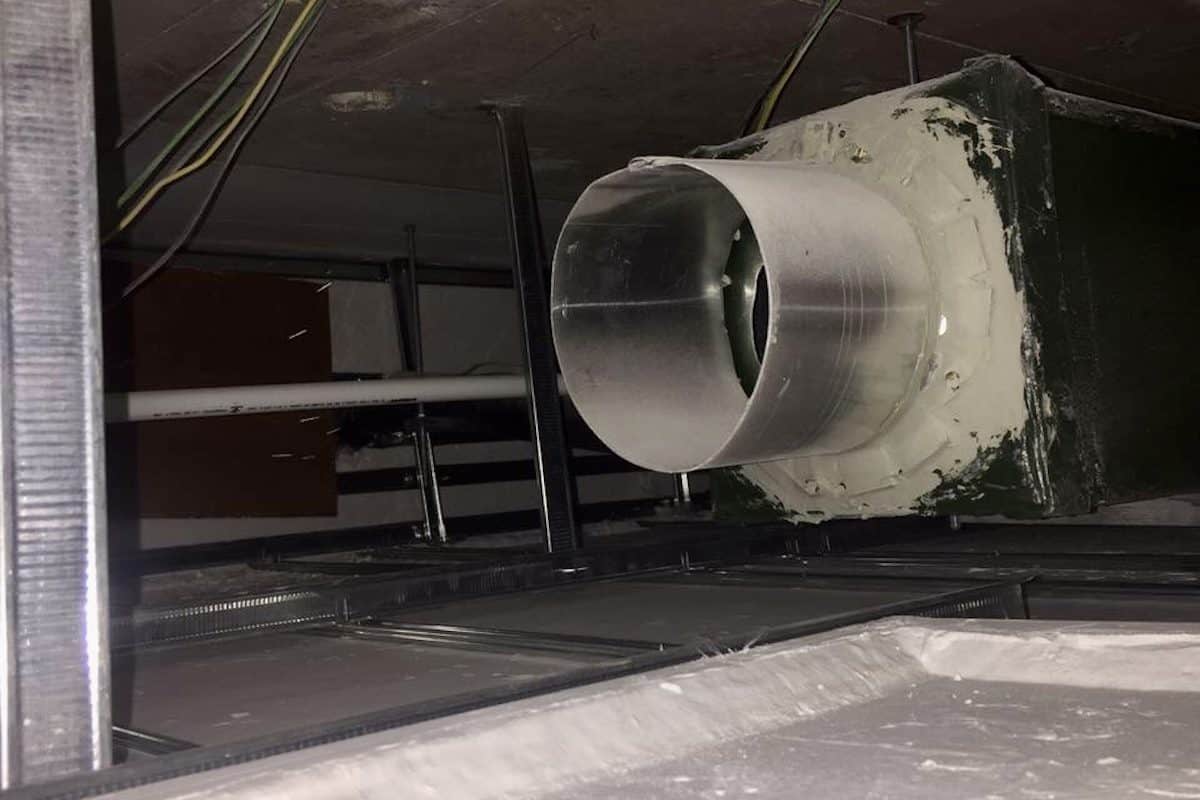
It is very common to use a flexible duct for the bathroom ventilation fan connection. Most bathroom fans are designed to be connected to a flexible duct.

If your ventilation fan is located inside the bathroom, the setup will be the same. Also, it is fine to use round rigid ducts instead of square/rectangular rigid ducts.
Flexible ducts by nature are not smooth and saggy. It is recommended not to use a flexible duct when the length exceeds 1.5 meters (5 ft).
Therefore, if your bathroom is more than 1.5 meters (5 ft) away from the nearest exterior wall for exhaust air discharge, you should use this type of duct setup to ensure proper ventilation.
2. Pure Rigid Duct
Sometimes, bathroom ventilation fans can be connected to rigid ducts only. Meaning, there is no flexible duct involved in the entire ductwork.
Such a ductwork design may involve a bathroom ventilation fan that is designed for a square/rectangular duct connection. Furthermore, the exhaust vent inside the bathroom is also connected straight to a rigid duct.
I would say it is rare to see such a pure rigid duct setup because not only it is more expensive than the rigid duct and flexible duct combo but it is also more difficult to install.
The good thing about using a proper length of flexible duct is that it allows for tolerances in case we want to adjust the position of the bathroom vent. Besides, it also absorbs vibration which I mentioned earlier.
Unless you are unable to get yourself flexible ducts or you only have a bathroom fan with a square/rectangular duct connection, I don’t see any benefit of using pure rigid ducts.
3. PVC Duct
When a bathroom is close to the exterior wall (eg: 5-10 meters), it is feasible to use a round PVC duct to vent a bathroom fan.
A PVC duct is basically a PVC pipe. I’ve seen bathrooms use a straight PVC duct to vent their bathroom fan. However, I don’t see the PVC duct bends.

The connection side of the PVC pipe also requires the use of flexible ducts. Instead of using rigid ducts, you replace them with the cheaper PVC pipes.
Such a venting method may not be applicable in certain places due to local authority requirements. Hence, do check before proceeding with this setup.
4. Pure Flexible Duct
Other than using PVC ducts/pipes, you can also use flexible ducts all the way to reduce cost. However, again, the length of the flexible duct should not exceed 1.5 meters (5 ft).
Some people vent their bathroom fan using a very long flexible duct. They pull it all the way from their bathroom to the exterior wall. Most of the time, the flexible duct will be saggy and squeezed.

It is not recommended to use a very long flexible duct for bathroom ventilation because saggy flexible ducts will obstruct the flow of exhaust air which may cause the bathroom ventilation rate to drop below your local codes or requirements.
Most of the time, the flexible duct is sized based on your local bathroom ventilation requirements so that your bathroom has adequate ventilation.
However, if the installation quality is bad, the actual ventilation rate may not be as good as you expected. Ultimately, your bathroom may not get the required ventilation rate and it is not good for your health.
Nonetheless, if your bathroom is near to the exterior wall (below 1.5 meters or 5 feet), using a flexible duct to vent the bathroom ventilation fan is absolutely fine.
Bathroom Ventilation Fan Duct Specification
Bathroom exhaust air is humid and corrosive. Hence, the rigid duct used must be made of galvanized iron (GI) or equivalent or better. Fortunately, ducts are mostly made of galvanized iron (GI).
Any duct, including for bathroom ventilation purposes, should be constructed in accordance with SMACNA standards. Meaning, the wall thickness of the duct should be at least 0.5 mm.
In addition, the rigid duct, the flexible duct or the PVC duct should be sized appropriately. Furthermore, the external static pressure of the bathroom fan must be checked so that it has sufficient strength to discharge the air outside the house.
Bathroom Ventilation Fan Duct Layout
There are basically two ways to run the duct for bathroom ventilation fans: a) to the side of the house or b) to the roof of the house.
Most of the time, you want to run the duct for your bathroom fan to the side of the house with an external weatherproof vent/grille.
If side discharge is not possible or very difficult to do and you prefer to run the duct to the roof, make sure you got it covered by some sort of elbow/bend so that rainwater doesn’t go inside the duct.
Below I have prepared an example of a bathroom ventilation fan duct layout that exhausts air to the side of the house:
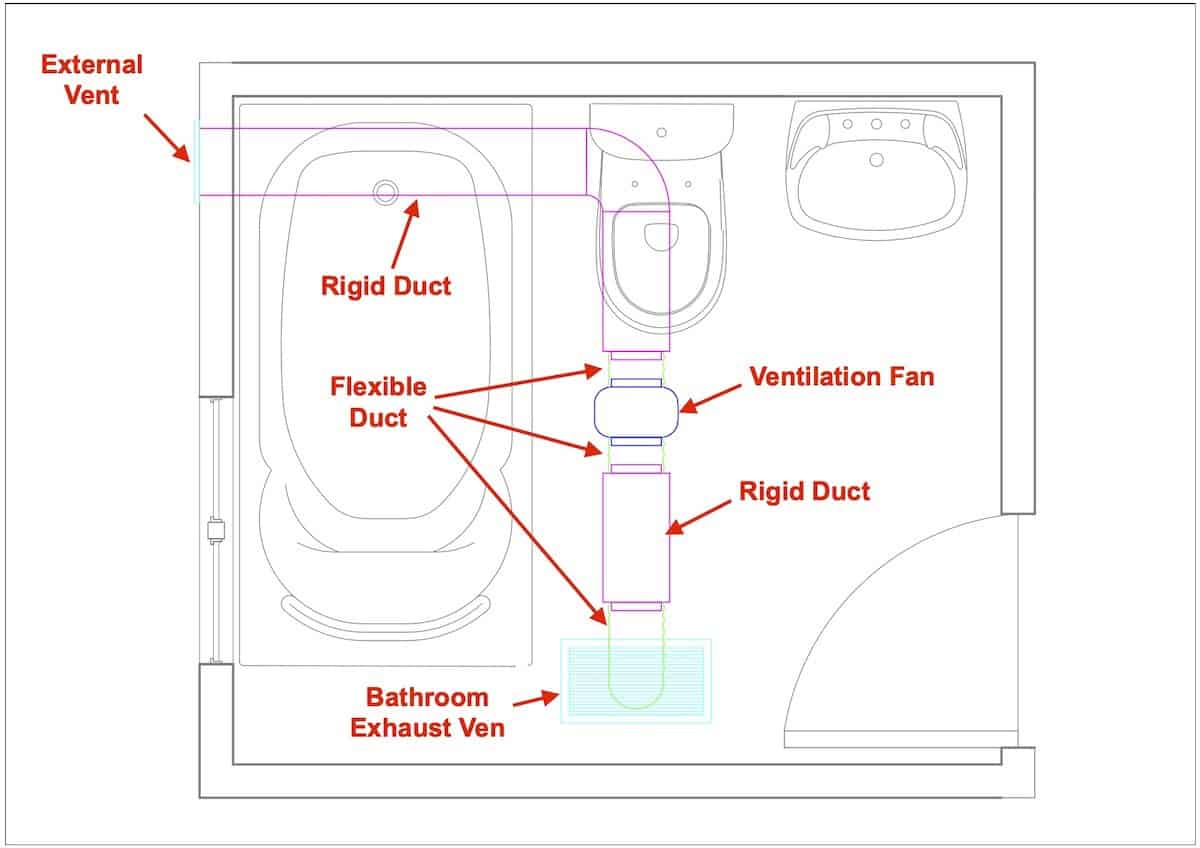
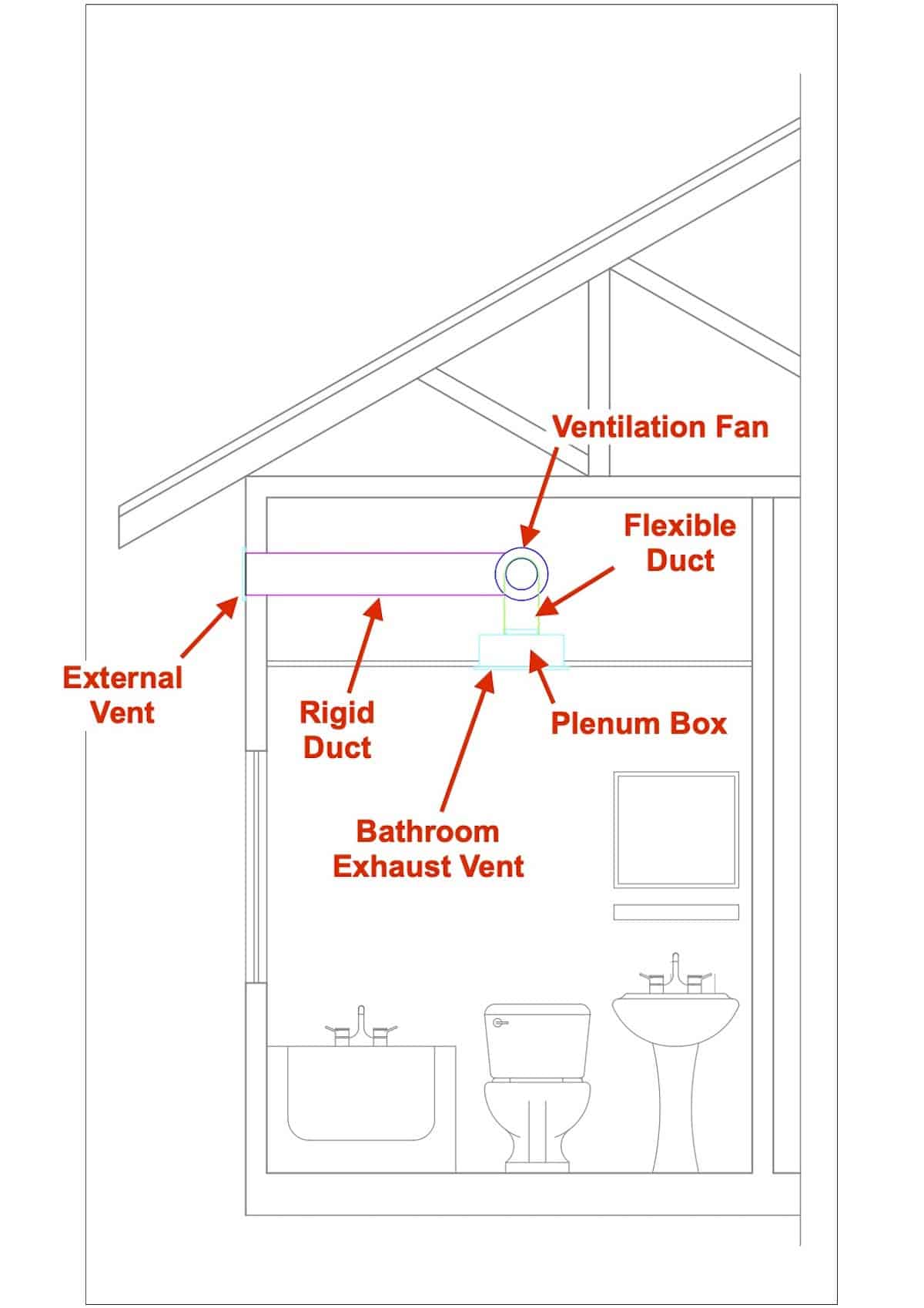
A typical bathroom ventilation system starts with an exhaust air vent located on the ceiling of the bathroom. The exhaust air vent has a plenum box and it is connected to a flexible duct which is then connected to a rigid duct.
Before the rigid duct meets the ventilation fan, it is connected to a flexible duct. The other end of the ventilation fan is connected to a flexible duct which is then connected to a rigid duct again.
The rigid duct runs to the exterior wall of the house and finally connects an external vent for exhaust air discharge at the side of the house.
If you can get yourself an integrated bathroom ventilation fan that comes with a vent and a plenum box just like this BreezSlim SLM70ELED Ventilation Fan (click to view on HVAC Direct), the installation work will be much easier.
In addition, the external vent should include an insect screen to prevent bugs and mosquitoes from entering your house through the vent. A good one that I found is this Metal Vent Grille by Vents-US (click to view on HVAC Direct).
For the flexible duct, some people wonder if they can use a dryer duct to vent their bathroom fan. The answer is yes but again, not too long. For those who have no experience in flexible ducts, this Omont Dryer Vent Hose (click to view on Amazon) is a good example.
Lastly, don’t forget to insulate all of the ductwork so that it won’t condensate during the winter.
Lastly, consider my Mini Split (eBook) if you want to know how can you use Mini Split in your house. If you still have doubt or not feeling confident enough, feel free to consult me.
Consultation Service
Ask me for HVAC advice such as brand selection, best model, benefits, features, placement, duct size, grille size, how to design, design check, verification and other HVAC related queries.
If you have anything to add (or ask) about this topic, leave a comment down below!



